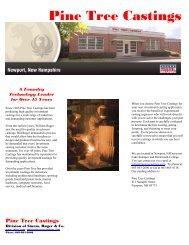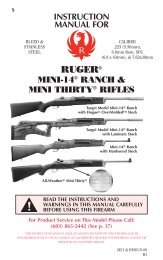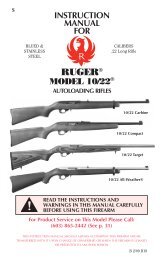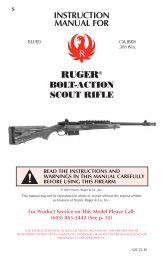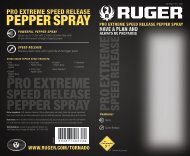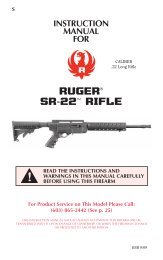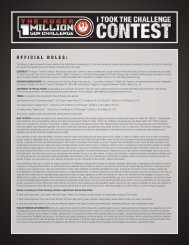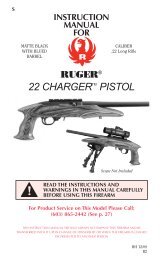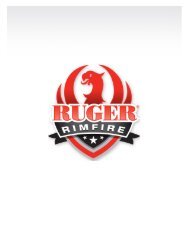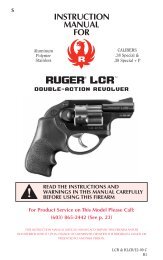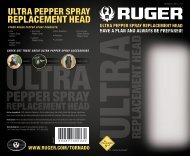Instruction Manual - Ruger
Instruction Manual - Ruger
Instruction Manual - Ruger
Create successful ePaper yourself
Turn your PDF publications into a flip-book with our unique Google optimized e-Paper software.
To minimize the possibility of such occurrences the gun user should:<br />
–Use ammunition of the correct caliber and type which is loaded to U.S.<br />
Industry Specifications. Do not use cartridges that are deformed, or<br />
cartridges that have been reloaded.<br />
–Clean and lubricate the gun in accordance with the instructions in this<br />
manual.<br />
–Learn to correctly operate the bolt and how to properly load and empty the<br />
chamber and magazine.<br />
–If the mechanism shows signs of not functioning correctly, or if a part is<br />
damaged or broken – don’t use the rifle. Have it inspected and repaired.<br />
For most repairs we recommend that <strong>Ruger</strong> guns be returned to the factory,<br />
However, if a gun has a cartridge in it which cannot be removed, then it is a<br />
violation of Federal Regulations to ship that loaded gun whether it be by U.S.<br />
Mail or by common carrier. Contact our Newport Product Service Department at<br />
(603) 865-2442.<br />
BASIC DISASSEMBLY AND REASSEMBLY<br />
WARNING –DISASSEMBLY<br />
Always unload a firearm<br />
before cleaning, lubrication,<br />
disassembly or assembly.<br />
UNLOAD BEFORE<br />
CLEANING<br />
It is preferable to carry out these procedures on a workbench or table which has a<br />
covered top. A piece of shallow nap rug or an old, coarse blanket is an ideal<br />
covering. Such a covering not only reduces the chances of the rifle slipping and<br />
being scratched, but it serves also to trap pins, plungers and springs that may<br />
otherwise get lost. It is advisable to have a container – such as a shoebox – in which<br />
each part can be placed as it is removed from the gun.<br />
Before attempting to disassemble the rifle for the first time, study the parts<br />
drawing and parts list so as to be familiar with the relative position, appearance and<br />
name of each part. Carry out the disassembly slowly, and carefully note the position<br />
of the part in the gun before starting to remove it. If a part is under spring tension<br />
(such as, the Safety Selector, Bolt Stop, Trigger) remove it cautiously and<br />
anticipate the direction the spring and plunger are most likely to “jump.”<br />
21



